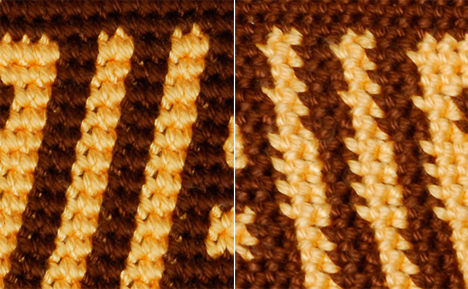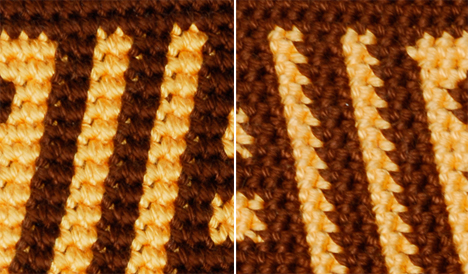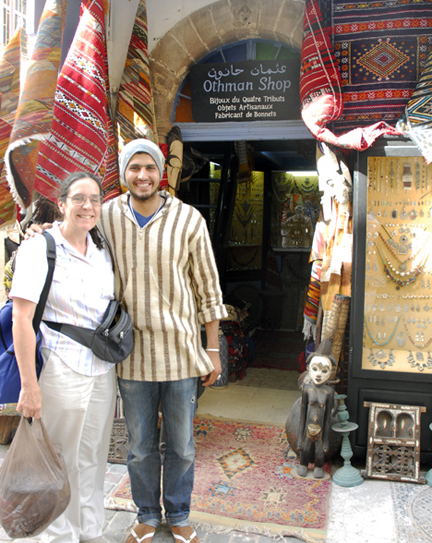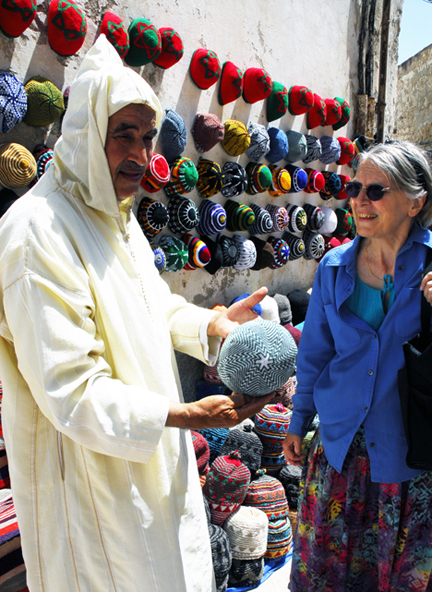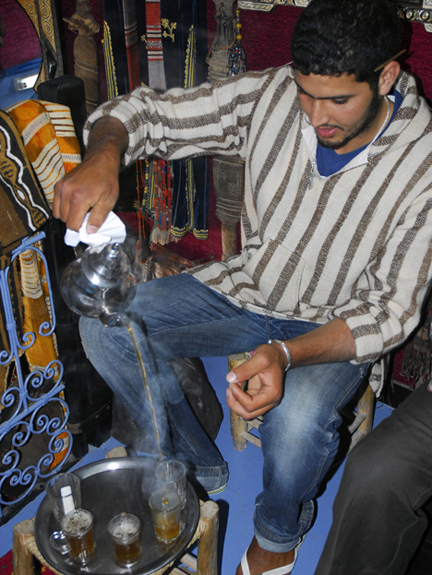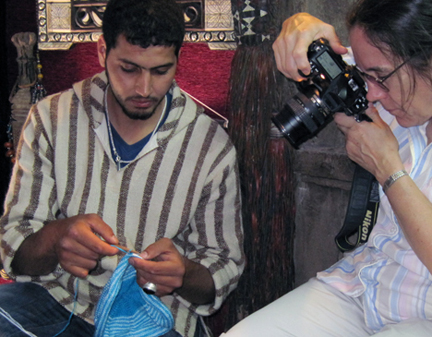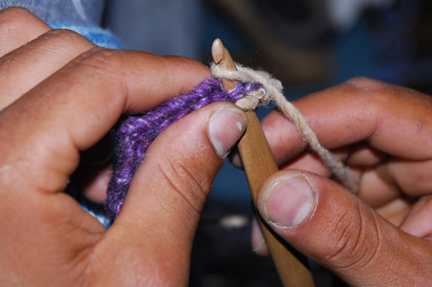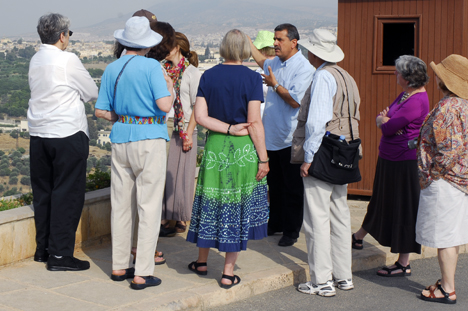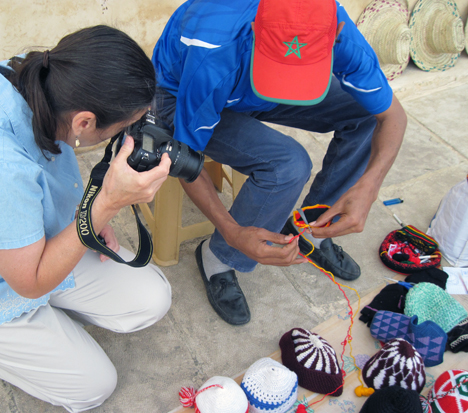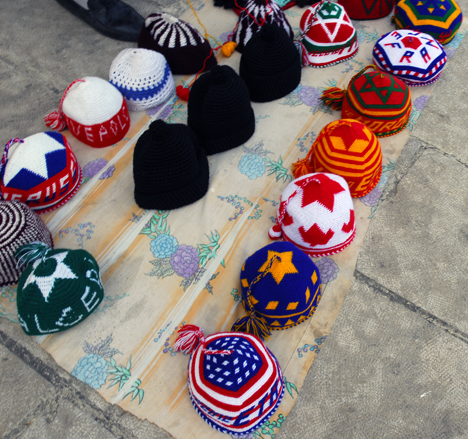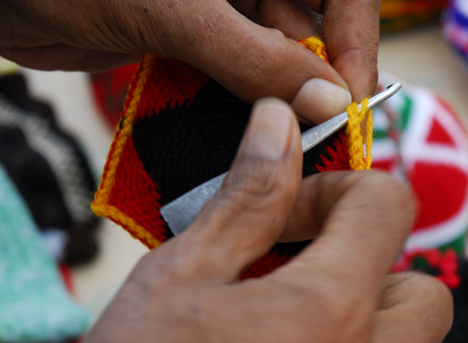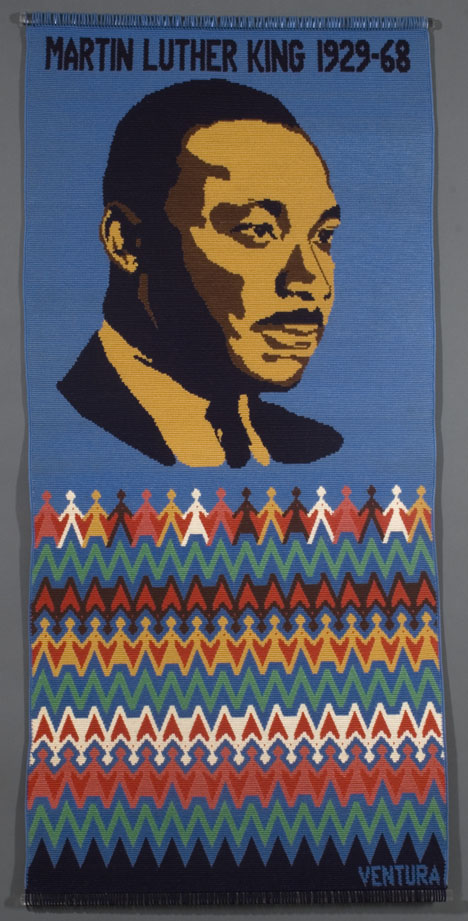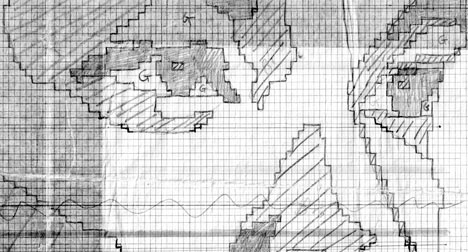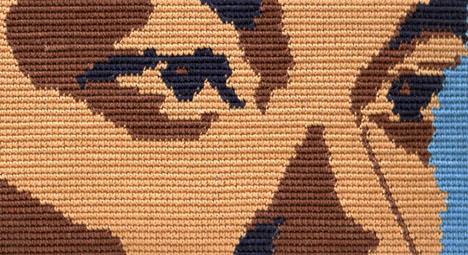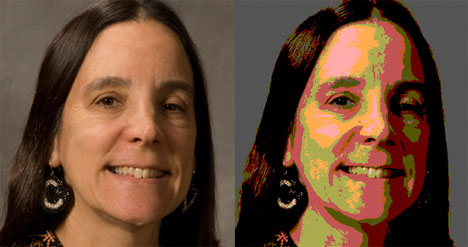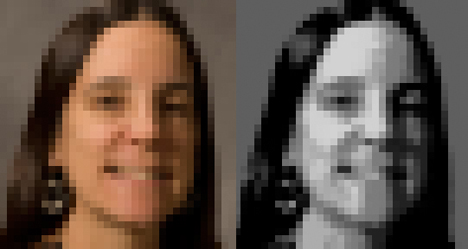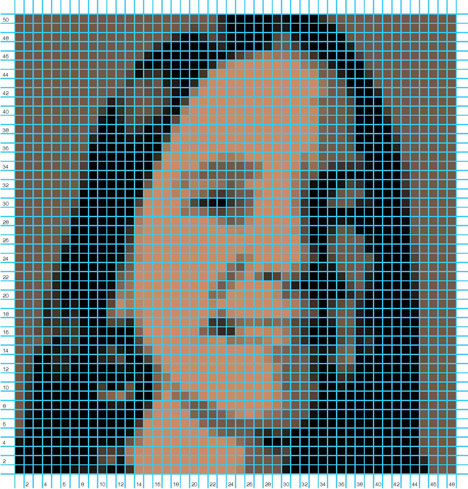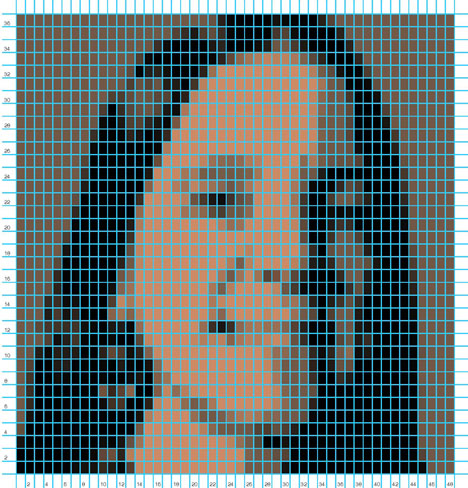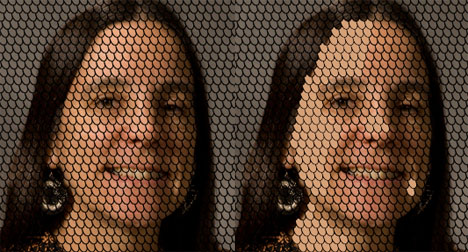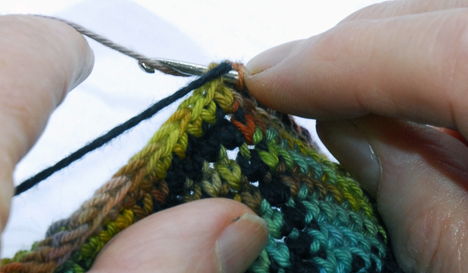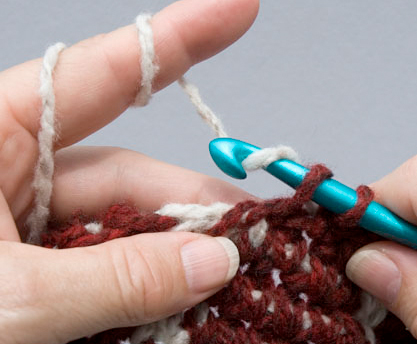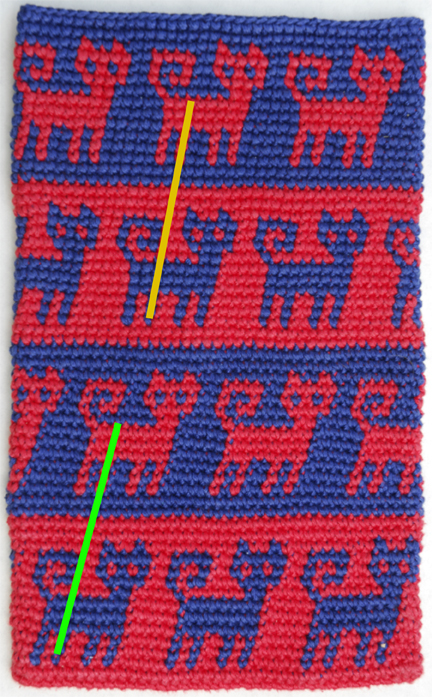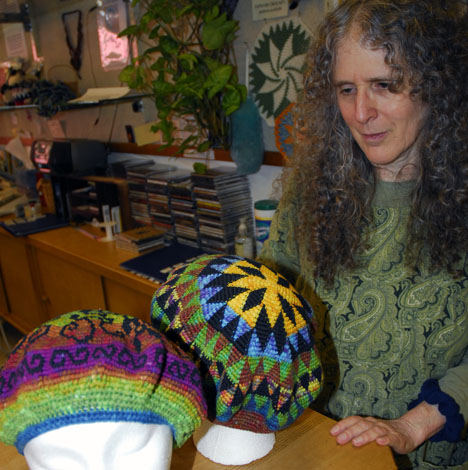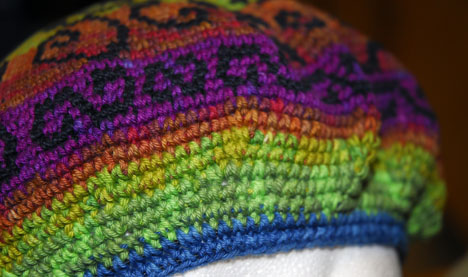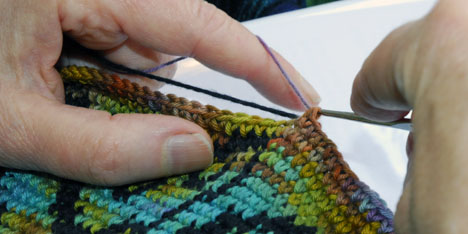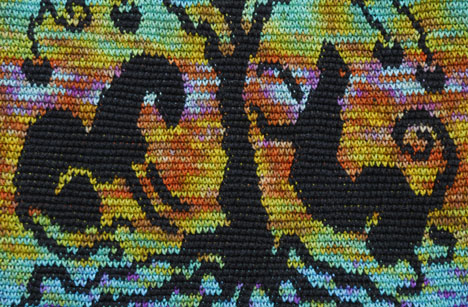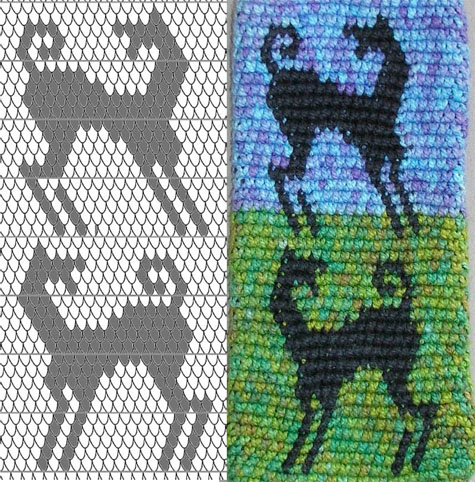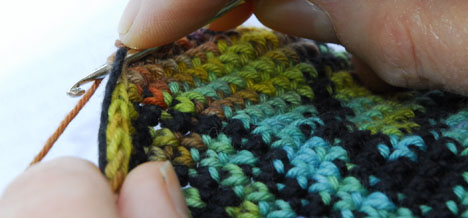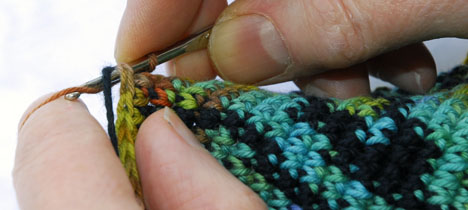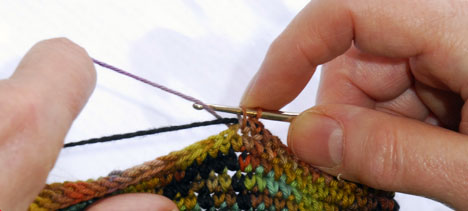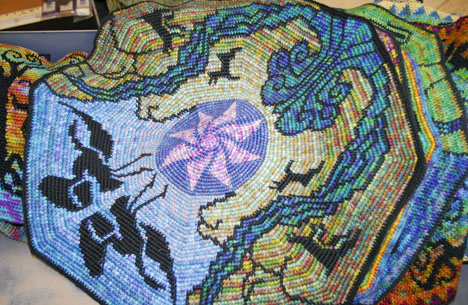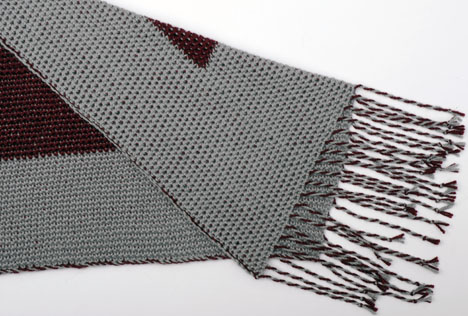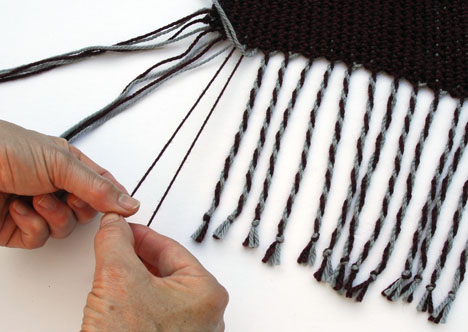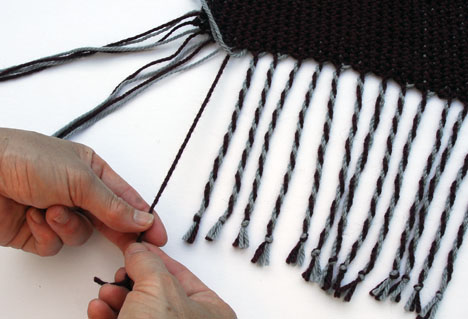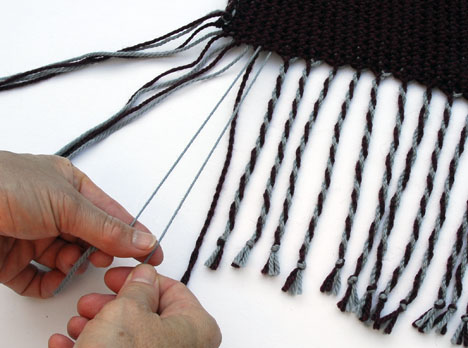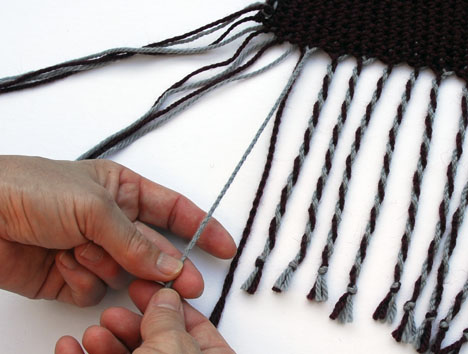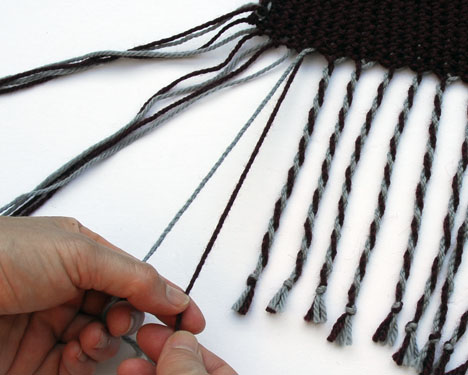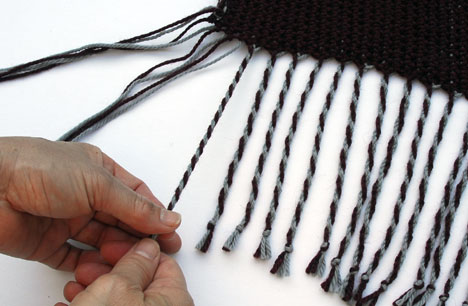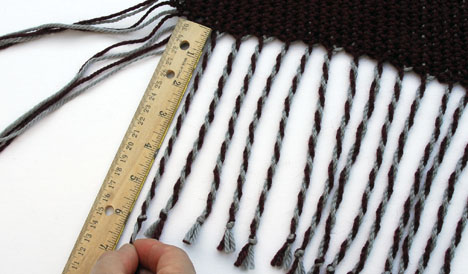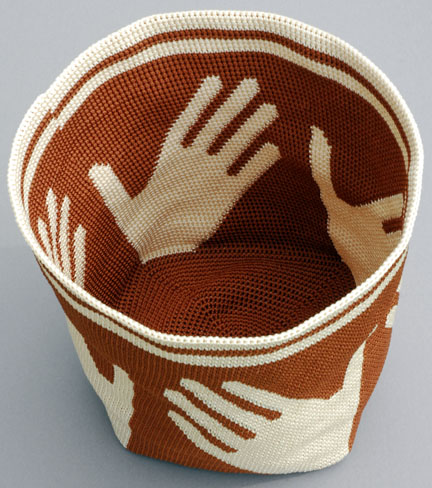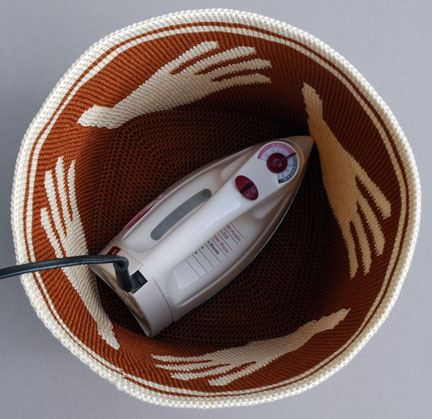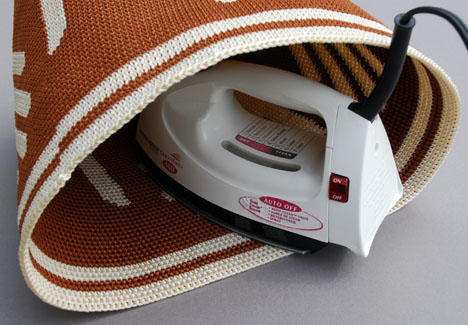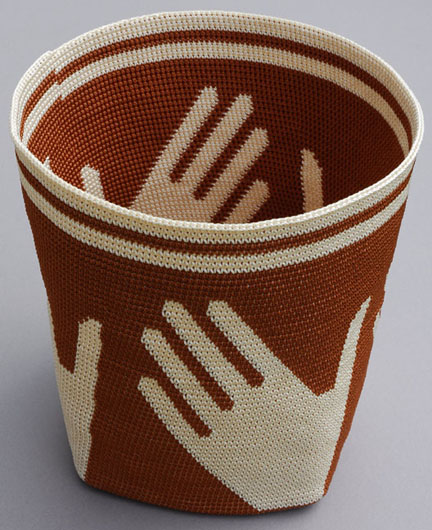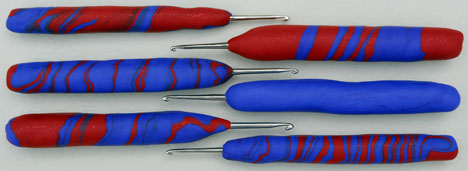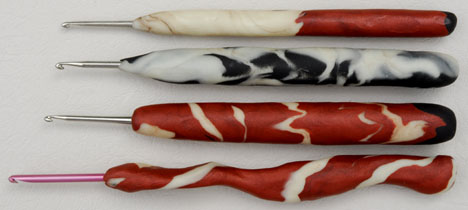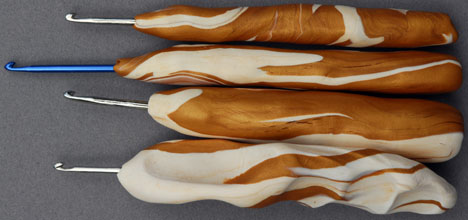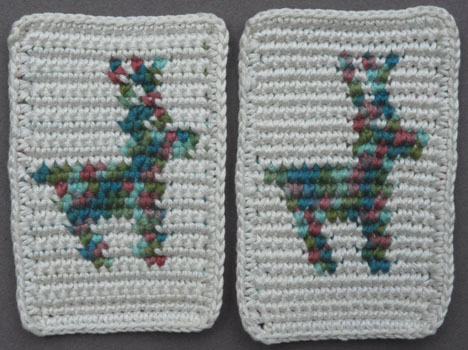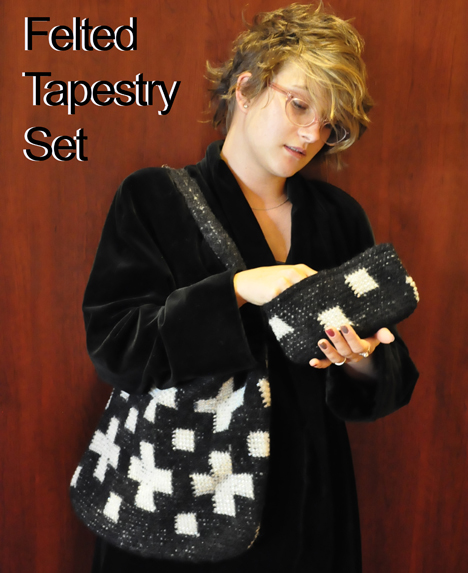
MainlyCrochet.com’s Felted Tapestry Set (photo by Don Patty).
I’m thrilled that my bead felted tote and matching cosmetic bag are now included in Mainly Crochet’s pattern inventory. The tote is fully reversible because of the seamless one piece construction and the fact that the motif is integrated into the fabric as it is tapestry crocheted. One side has beads and the other is plain, so it’s two totes in one!
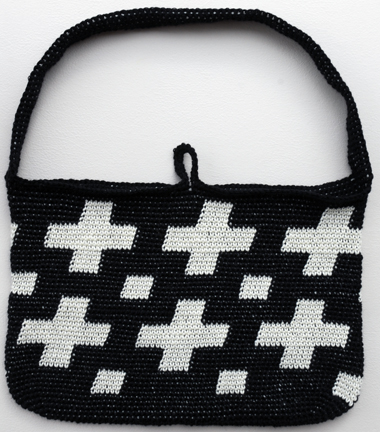
Tapestry crochet tote before felting, 13″ high by 18″ wide, worsted wool.
Large, loose stitches felt wonderfully in a washing machine. The carried yarn makes the fabric durable, so no lining is necessary.
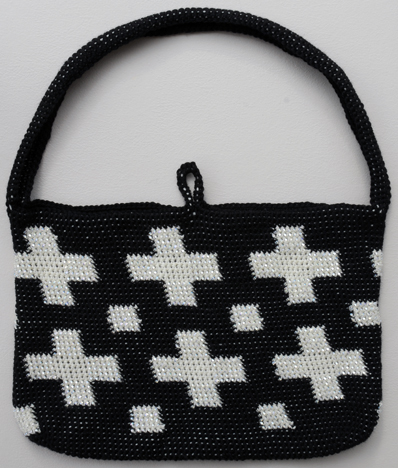
Bead side of the tapestry crochet tote before felting, 13″ high by 18″ high, worsted wool and size 5 triangular glass beads from Fire Mountain Gems.
Glass beads are heavy, so I only put them as accents in the squares and on the arms of the crosses, for a subtle sparkle.
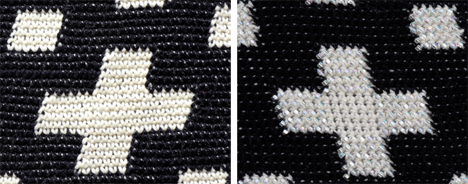
Detail of the plain (on the left) and beaded sides of the tapestry crochet fabric before felting.
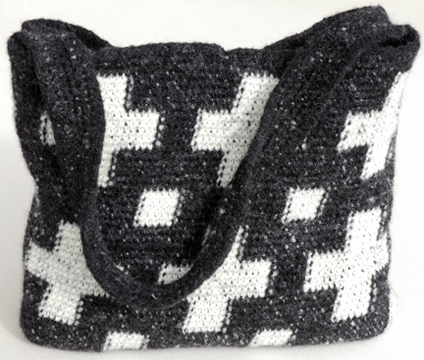
Finished felted tapestry crochet tote, 12 1/2″ high by 14 1/2″ wide, worsted wool.
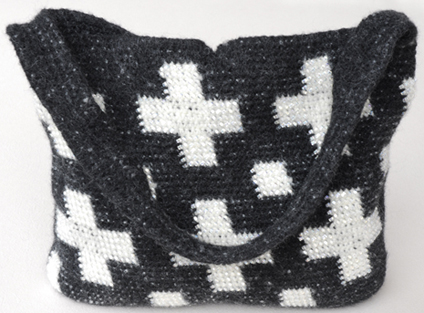
Finished beaded felted tapestry crochet tote, 12 1/2″ high by 14 1/2″ high, worsted wool and glass beads.
As usual, I experimented and made a large swatch (below) before crocheting the above bag. As you can see in the before and after pictures, the tapestry crocheted fabric shrinks more horizontally than it does vertically. The loose stitches allow specks of black to show in the white and white dots the black – but large stitches are necessary for successful felting. No problem for me because I actually like the “tweedy” look.
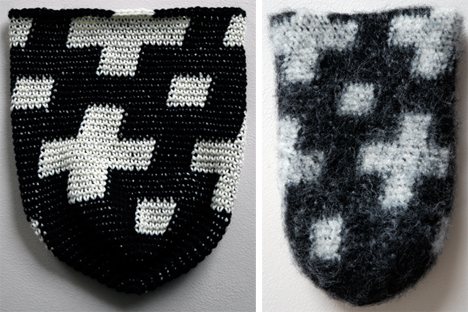
Tapestry crochet swatch – before and after felting.
I had to experiment with the cosmetic bag, too. Each of the finished bags (below on the right) have a zipper closure.
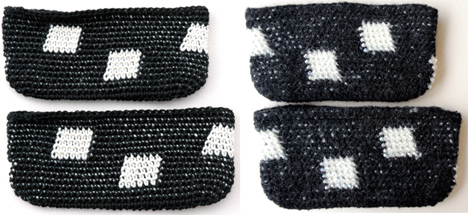
Tapestry crochet cosmetic bags before and after felting. My first attempt is on top.
I hope you’ll give this Felted Tapestry Set a try. If you have never done felted tapestry crochet, you might consider making a Felted Amulet Bag, the free introductory felting project linked to my web page that includes online instructions and a video tutorial. Please also take a look at my Bead & Felted Tapestry Crochet book and web page for more inspiration.
